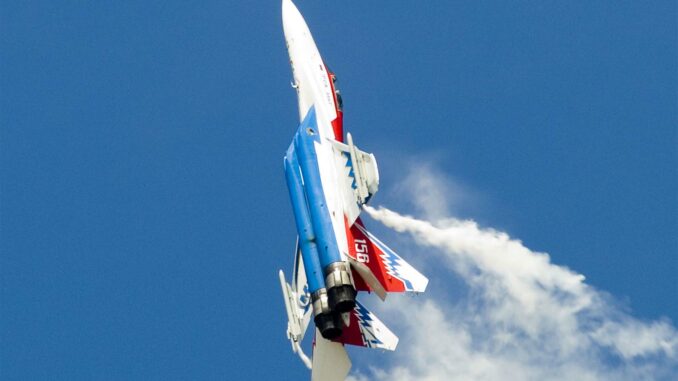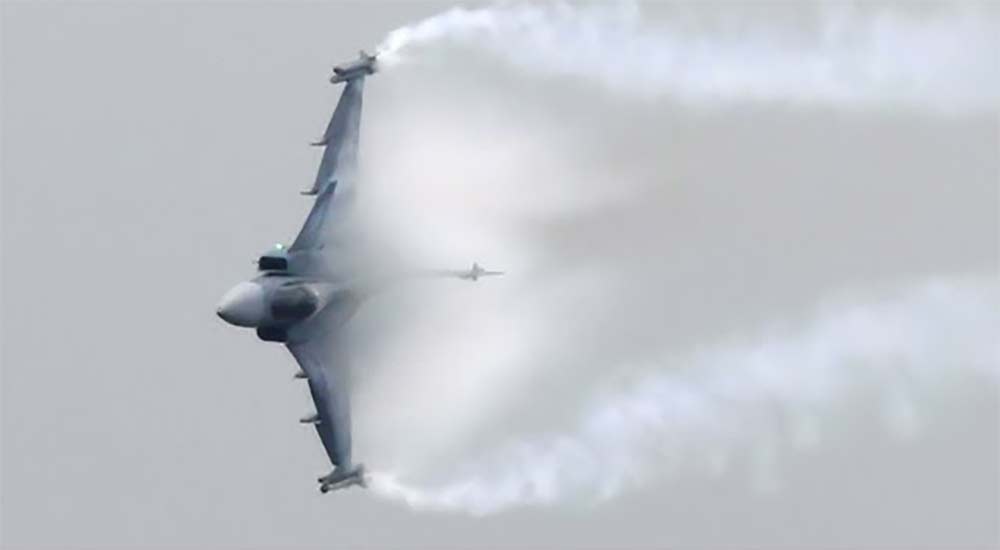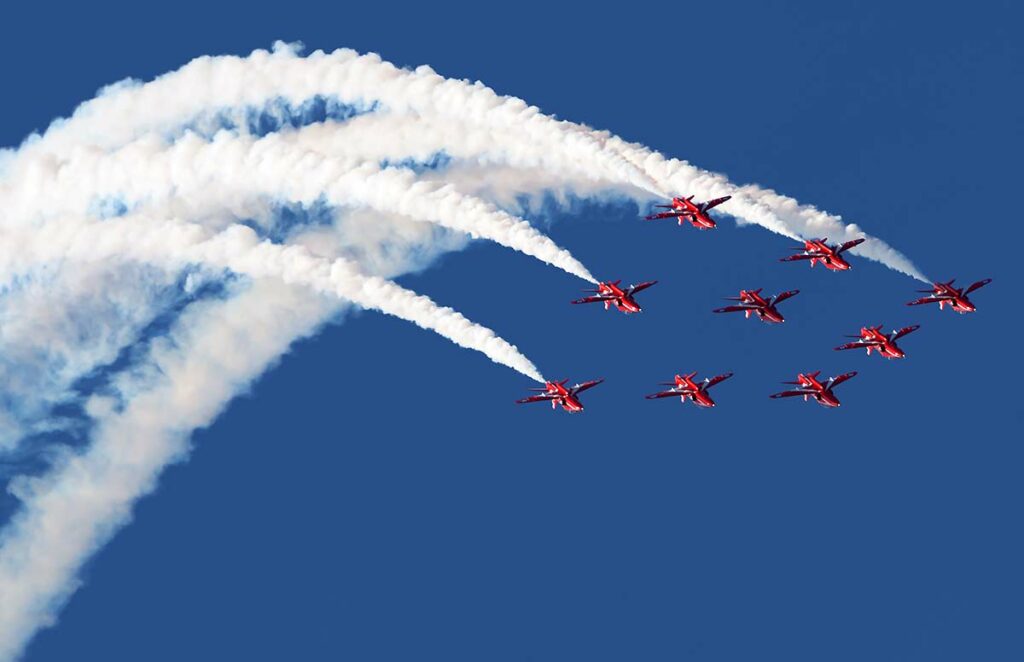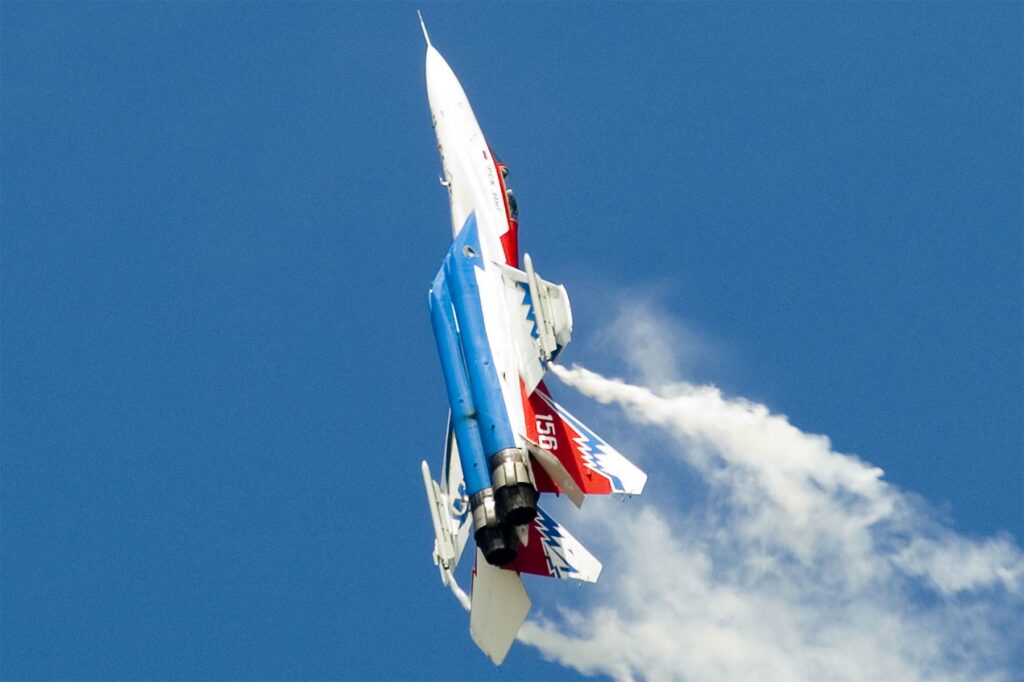
Discover the spectacular aerial maneuvers of fighter jets, with detailed examples and precise figures.
Fighter aircraft aerial maneuvers
Modern fighter jets are capable of impressive aerial maneuvers, thanks to technological advances and sophisticated aerodynamic designs. These maneuvers are crucial for combat and interception missions, where air superiority is essential. This article explores the most impressive maneuvers, detailing the technical and scientific aspects that make them possible.
Pugachev’s Cobra: a demonstration of aerodynamic superiority
The Pugachev Cobra is one of the most spectacular aerial maneuvers, often performed by aircraft such as the Su-27 and Su-35. This maneuver involves bringing the aircraft to a very high angle of attack, sometimes up to 120 degrees, before returning to a normal flight position.

Advantages and disadvantages
Advantages:
- Avoids missiles in close combat.
- Demonstrates the aircraft’s exceptional maneuverability, which can act as a deterrent.
Disadvantages:
- Temporary increase in drag, resulting in loss of speed.
- Makes the aircraft vulnerable for a few seconds.
Consequences for piloting and design
The Cobra requires precise control of flight surfaces and mastery of vectored thrust engines. Pilots must be highly trained to execute this maneuver without entering a stall. Aircraft capable of this maneuver are often equipped with advanced flight control systems that allow quick and precise adjustments.
Flat roll: mastering rapid rotation
The flat roll, or “aileron roll”, is a maneuver in which the aircraft rotates rapidly around its longitudinal axis while maintaining a straight trajectory. This maneuver is often used to evade attacks or to quickly adjust the aircraft’s position in air-to-air combat.

Advantages and disadvantages
Advantages:
- Allows you to disorientate opponents and dodge fire.
- Used to quickly reposition the aircraft in the face of a threat.
Disadvantages:
- Requires precise coordination of flight controls.
- Can disorientate the pilot if poorly executed.
Consequences for structure and control
The flat roll imposes significant stresses on the aircraft’s structure and flight control systems. Engineers must ensure that the aircraft can withstand gyroscopic forces and pressure variations during rotation. Advanced flight control systems are needed to maintain aircraft stability during this maneuver.
Tight turns: optimizing centrifugal force
Tight turns, or “hard turns”, are crucial in aerial engagements, enabling pilots to change direction quickly to follow or avoid an opponent. An aircraft’s ability to perform a hard turn depends on several factors, including wing loading and engine thrust.

Advantages and disadvantages
Advantages:
- Increases maneuverability in close combat.
- Keeps the aircraft at an advantage over the enemy.
Disadvantages:
- Causes a significant increase in centrifugal force, increasing the G-load on pilot and aircraft.
- Can lead to significant loss of speed if the turn is too tight.
Consequences for pilot and equipment
Tight turns place severe physiological demands on pilots, who must withstand high G-forces. G-suits are essential to enable pilots to withstand these forces without losing consciousness. In addition, aircraft must be structured to withstand the forces generated by these maneuvers without sustaining damage.
Vertical loops: controlling kinetic energy
Vertical loops are maneuvers in which the aircraft describes a complete vertical circle. These maneuvers demand precise control of the aircraft’s kinetic and potential energy, requiring perfect coordination between engine thrust and flight controls.

Advantages and disadvantages
Advantages:
- Used to gain height quickly and re-engage an opponent from an advantageous position.
- Maintains momentum and speed.
Disadvantages:
- Can lead to loss of altitude if poorly executed.
- Requires precise energy management to avoid stalling at the top of the loop.
Consequences for performance and strategy
Vertical loops require precise management of aircraft performance, in particular the management of kinetic energy to maintain speed and altitude. Pilots need to be able to judge the right entry and exit speed to avoid a dangerous loss of altitude.
Fighter aircraft aerial maneuvers are demonstrations of technological prowess and advanced piloting skills. Every maneuver, from Pugachev’s Cobra to the flat roll, tight turn and vertical loops, presents strategic and tactical advantages, as well as significant technical challenges. Advances in aerodynamic design and flight control systems enable pilots to perform these maneuvers with impressive precision and efficiency, reinforcing air superiority on the battlefield.
War Wings Daily is an independant magazine.
